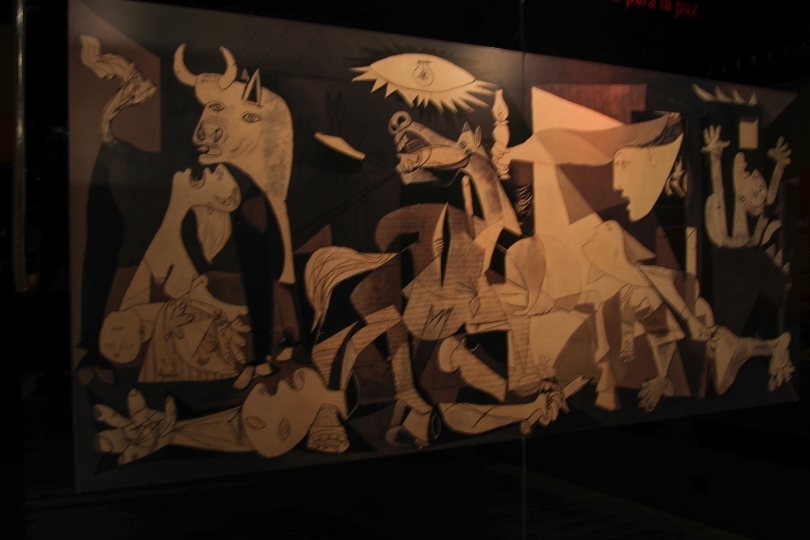I am standing in a Spanish market town which looks like so many others which I’ve visited over the years. As it happens, by longstanding tradition, Monday has been market day from time immemorial. However, on Monday April 26th 1937 – about a month after Easter – it was a day like no other. From 4 pm, and lasting for several hours, German and Italian planes bombed the hell out of Guernica. The buildings consisted mainly of wood, and the aircraft first targeted the town’s water tanks and fire station. Those who attempted to flee into the countryside were strafed by German fighters circling the drop zone of the bombers. It is estimated that with visitors to the market from nearby Bilbao, there were 10,000 people in the town that day. Three days after the attack the forces of General Franco occupied the town and, consequently, it is very difficult to know the true human cost of this atrocity. The most likely figures estimate 1,645 dead and 889 injured. Given the length and intensity of the attack these numbers may be underestimates, but we shall never know for certain. Due to the longevity of Franco’s reign independent data-gathering and interviews with survivors only took place long after the destruction of the town.
Guernica had no air defences. In fact, there was nothing in the town which could have responded to an attack from the air. Without fear of their own losses, German and Italian forces reigned down terror – and this was a primary goal of the mission. It communicated around the world that Axis forces could, and would, attack civilian targets with impunity, wherever it was deemed necessary. Reducing a town to rubble simply became one strategy in the ambitions of conquest which the dictators desired and sought to enact. It was a powerful example to anyone contemplating resistance about the cost of non-compliance.
“It is necessary to spread terror,” General Emilio Mola declared on 19 July 1936, just a day after the coup began. “We have to create the impression of mastery, eliminating without scruples or hesitation all those who do not think as we do.”
General Emilio Mola quoted in “Guernica” in the BBC History Magazine
It was the event which inspired what has been described as the last political masterpiece of art, Picasso’s Guernica. Visiting the peace museum in the town there are several representations of Picasso’s work, set alongside many photographs of the destruction left behind. As with Ukraine and Gaza, and so many other places, the piles of rubble and scorched buildings stand as symbols of desecrated communities. There are always narratives that seek to find excuses for such actions. “Local people were sympathetic to terrorists; they sheltered them; they conspired with them”: therefore the cost they have paid is entirely proportionate. Only the delusional can believe that the eradication of schools; hospital and places of worship will bring about an enduring peace. Instead, it plants in the hearts of the survivors, and especially the young, a determination fuelled by a loss which seeks justice by all available means. These fires burn long, long, after the incendiary devices have done their worst.

In Guernica’s ‘Park of the Peoples of Europe’ are works by the Basque sculptor Eduardo Chillida (pictured) and Henry Moore. Chillida’s piece (pictured) is entitled “Our Father’s House” and was commissioned to mark the 50th anniversary of the bombing.
The desire to eradicate difference is perhaps one of the most pernicious threads pulled through the most shameful parts of human history. When our arguments don’t prevail, or people seem unreasonably stubborn to retain their language or culture, let’s simply bomb them into submission. What we never seem to learn, despite the beguiling simplicity of this approach, is that it doesn’t work. It perpetuates hatred and drives culture underground, not to extinction. If a fraction of the energy and resource that went into war were taken to promote peace, we would live in a very different world. It took the horrors of WWII to create the United Nations, and several other institutions dedicated to promote understanding, peace and reconciliation. At some point, God willing, may we find in the aftermath of today’s destruction an equal determination to seek peace and pursue it.

